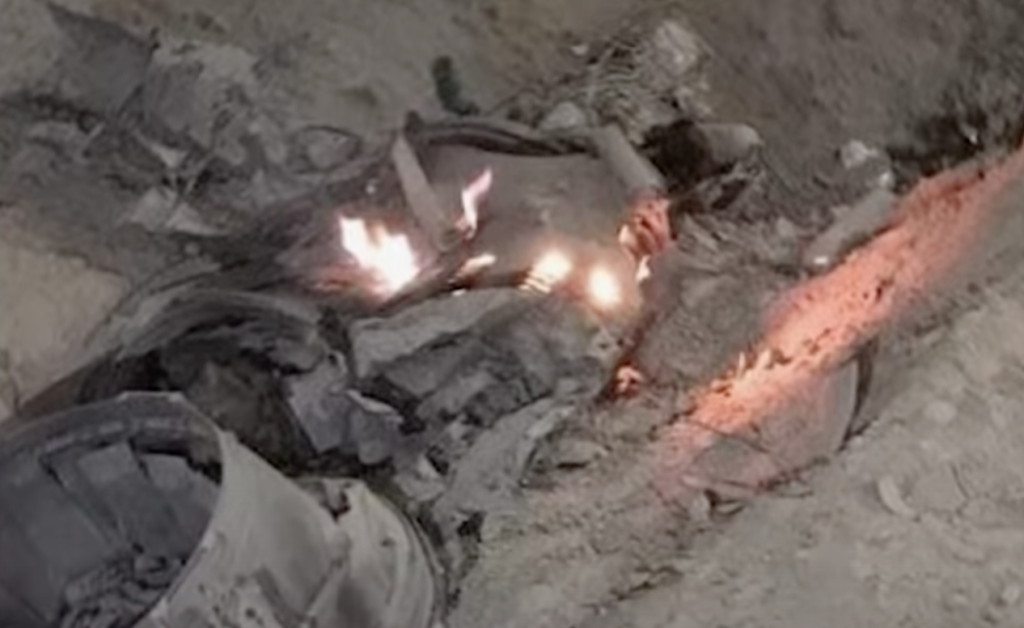
The unarmed Indian supersonic missile that headed into Pakistani territory on 9th March 2022 for 3 minutes and 44 seconds before ending up in the Mian Channu area of Khanewal district, reflects India’s malign intention and offensive strategy against Pakistan. This also partly reflects India’s poor safety, security and procedural mechanisms related to its delivery systems. One wonders if this was accidental or intentional. It is imperative to note how a supersonic missile with an approximate speed of Mach 3 could initially travel 70-80 km southwest and then turn ninety degree north-west directly towards Pakistan.
Tellingly, while the missile was perceived to be unarmed, the controlled maneuverability and change in direction cannot simply be termed as accidental. There must be something deeper that we need to explore further. For any missile to be tested, it must go through various combinations of technical, mechanical and security mechanisms before launching for the required tests to minimize the risk of accidental launch.
How could India’s technical and security leadership in the contemporary technologically advanced era allow the launch of such a sophisticated supersonic – albeit unarmed – missile without making sure the required rudimentary technical steps had been observed? Why India tested its missile close to the Pakistani border in the first place, knowing the risk of misadventure and possible accidental escalation? Why did India’s hypersonic and other strategic missile tests not end up with an accidental launch falling in one of the South Asian countries? Can Pakistan’s more recent detection of an Indian submarine that tried to enter Pakistani waters be considered an accident as well?
Presumably, there can be a couple of reasons to explain what happened. One, India was trying to test Pakistan’s deterrence capability and its resolve to respond to such unforeseen events to its maximum benefits. Two, India had been exploring options to find loopholes in Pakistan’s military and nuclear policies. However, it is riskier for India to exploit the gaps that Pakistan has already plugged. Three, India had been trying to improve its first strike capability for a decapitation obliterating as many targets as India’s security leadership desires. Four, India aspires to the acquisition of emerging technologies. For instance, more recently, it has tested its hypersonic missile. To reiterate the question: Why did India`s hypersonic missile did not face a similar misadventure ending up in one of the South Asian countries? Five, India is desirous of keeping the escalation dominance in its favor. To this end, India has been working on various combinations of mega strategic projects targeting both China and Pakistan. Six, it wants to demonstrate that Pakistan’s likely retaliation to such serious incidents remains a bluff, undermining the credibility of Pakistan’s deterrent forces. Finally, the acquisition of newer technologies tempts India towards preemptive strikes. Arguably, the perceived malfunction in India`s acquisition of newer technologies can also cause accidental war in South Asia.
Sadly, the Indian Defence Ministry delayed and limited reply, while deeply regretting the incident, only came after ISPR Maj Gen Babar Iftikhar’s briefing to the Pakistani media on the episode. India is yet to provide a substantial and comprehensive explanation for the incident that threatened to undermine the peace, security and broader strategic stability of South Asia. Consequently, the whizzing through of India’s strategic missile at such a speed and height could have hit national or international passenger aircrafts. It could have destroyed a population center causing collateral damage. More importantly, it could also have caused Pakistan’s retaliation against such an incident. Would India accept such egregious irresponsibility? Perhaps, not. India’s temptation towards escalation dominance and power projection risk a serious military crisis between the South Asian nuclear powers. Surprisingly, the international community, particularly the leading powers, are silent on holding India responsible for an incident that could have caused accidental escalation between the South Asian nuclear rivals.
Unfortunately, international relations amongst nation-states are carried based on national interest rather than religion, morality, and friendship. In other words, powerful states hold relationships because of economic and strategic value these countries have. India’s membership of the QUAD is an example, where it is primarily considered as a lynchpin of the US strategy of offshore balancing to contain China. Therefore, geo-political and geo-strategic imperatives play a significant role in the making of foreign policy decisions -that is, when and why to pressurize countries.
Arguably, India’s leaky submarines, missing nuclear materials, and more recently the perceived intentional missile misadventure requires that the international community, particularly the P-5 countries, revisit India’s offensive strategy as well as safety, security and procedural mechanisms in order to prevent such incidents from occurring in the future. In this context, major players in the international system need to revisit their strategies with India to come to a logical conclusion as to whether they are making India a geo-strategic favorite or creating a Frankenstein in the perceived Indo-Pacific region. Only in doing so may the international community contribute towards South Asian strategic stability. On the contrary, there is always a potential risk of serious military crisis followed by such incidents; this could cause a miscalculated and accidental war; and it further could undermine the strategic stability of South Asia.
All that being noted, the intentional theoretical explanation regarding India’s missile misadventure, based on the reasons conceived here, outweigh the accidental theoretical imperative. If it does, then it is a clear violation of Pakistan’s sovereignty and territorial integrity. Nevertheless, to prevent further mistrust and miscalculation, India needs to hold a joint probe, not only substantially explaining to Pakistan why and how this incident occurred, but also involving Pakistan in a serious investigation to identify the reasons, consequences, and recommendations for such unacceptable episodes. It is about time India demonstrated its responsibility, rationality, and reasonability in the South Asian region to prevent the risk of accidental escalation to a nuclear level.
![]()




Be the first to comment